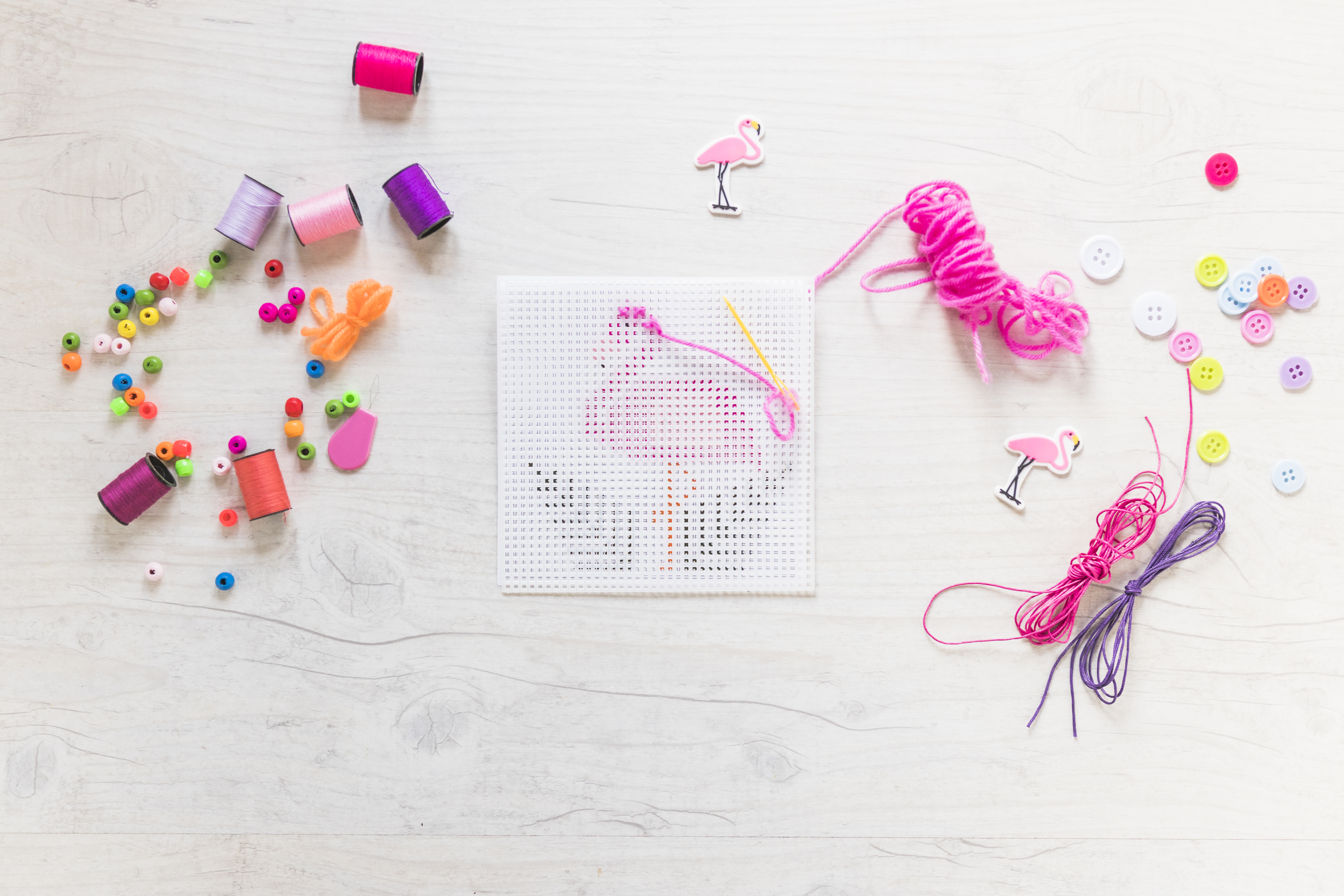If you’re into cross stitch, chances are that you learnt as a child, perhaps under the watchful eye of your mother or grandmother. Many cross stitchers are keen to share their skills and knowledge with younger generations and inspire new crafters to take up needle and floss. But how do you go about teaching cross stitch to kids?
Why Teach Kids Cross Stitch?
Perhaps you have a child, grandchild or young person in your care who is keen to learn the craft of cross stitch. While sharing your skill is a wonderful idea, not everyone is a natural teacher, so it’s important to think about the basics before you get started. If you’ve not taught someone cross stitch before, it could be a frustrating or stressful experience for both of you if approached in the wrong way. First, how old is the child? There’s no minimum age for learning to cross stitch but considering the fine motor skills and dexterity of children’s hands, the age of six and above would be a good time to think about learning cross stitch.
Sharing your skill with a child is not only enabling them to have that skill for themselves, it can also boast other benefits. For starters, sharing a skill can be a great bonding exercise, first from teaching them how to do it, and then from the years of enjoyment that come from having the same hobby. Teaching a child how to cross stitch enables them to express themselves creatively, to engage in a mindful activity that can bring calmness to their busy (and technology filled!) lives.
Best Projects for Kids
A simple project is great to start with – something where the little cross stitcher doesn’t really need to follow a pattern, but can just get some practice making different stitches. Using a strip of aida to make a stitched bookmark is a practical thing that will be useful once completed, as well as fun to make. Choose aida that has a lower thread count (and bigger holes) as this will make it easier to sew into. For example, Binca aida is a great choice.
What Equipment Kids Need for Cross Stitching
While you don’t necessarily have to choose a stitching kit that has been made specifically for children, there are benefits to choosing a children’s cross stitch kit. Often, the needle will be blunter which makes it safer for little fingers, and the kit will come with the appropriate aida and floss included. If you are doing your own thing, made sure that you provide scissors which are the correct size for a child and not too sharp. A great first project is to just put some aida in an embroidery hoop and let the child do whatever they like. They don’t need to follow a pattern – they can make something up or have fun trying different stitches. The final project could be framed or sewn onto a tote bag. Find projects appropriate for the child’s skill and age. For example, a teenager learning to stitch will quickly progress from the basics, and will want something to capture their interest, like stitching the motif of their favourite band to put on a school bag.
Top Tips for Teaching Kids to Cross Stitch
- If the child isn’t interested, don’t push them. They’ll never develop a love of cross stitch if they feel forced into doing it. Sometimes they just aren’t in the mood, or perhaps you need to wait until they’re a little older. Similarly, if a child chooses to give up, you can give them some gentle encouragement, but don’t push it if they’re really not interested.
- Let the child make as many of the decisions as possible – what pattern to follow, what color floss to use, etc. If they get to choose, they’ll enjoy the project more and be keen to keep it up.
- In the beginning, keep each stitching session short. Children get bored easily, so it’s better to practice little and often. Also, don’t try to teach them too many things at once. Focus on one or two simple stitches per session and let them practice it often before doing something new.
- Try to be patient, especially if they don’t get it right away. Remember how frustrating it was for you the last time you learnt a new skill. Luckily, children are fast learners and will be receptive to new skills if they’re enjoying themselves.
- Don’t try to work on your own project while teaching a child cross stitch – just concentrate on helping them and enjoy the time you’re spending together. While it’s tempting to get out your own work in progress, you won’t be able to concentrate on it and will end up getting frustrated.
- Praise the child for their efforts, and keep an upbeat attitude when mistakes arise. Getting cross with a child will be disheartening and put them off trying again.
- Finally, be kind to yourself. Teaching a child to cross stitch is a lovely idea but isn’t always easy to do. Keep your expectations low but prepare to be impressed. In years to come, you could be looking back with fondness on these memories while admiring the wonderful new projects your stitching child will be creating!

